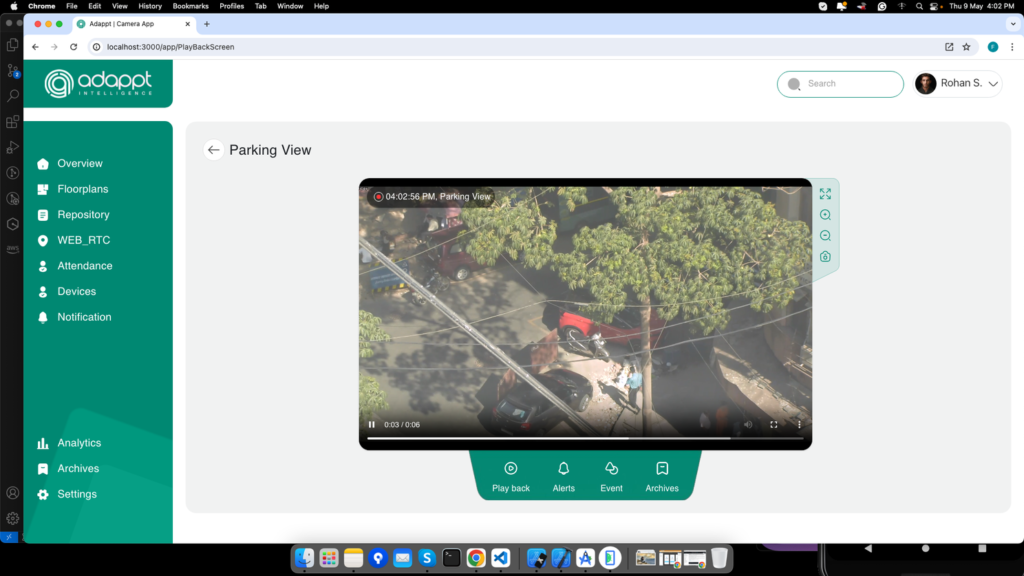The global smart home market, valued at $7.37 billion in 2022, is projected to reach $30.1 billion by 2030, growing at a rate of 19.2% annually. Discover P2P ID ID: w1237560-dac technology in IP cameras, offering secure, remote streaming solutions for efficient home, retail, and industrial surveillance.Despite the growth, inefficiencies and high costs continue to challenge the sector. This is where P2P (peer-to-peer) technology steps in, offering solutions that make surveillance technology more accessible and cost-effective.

What is P2P Network Technology?
Peer-to-peer (P2P) computing enables equal participants, known as peers, to share resources like processing power, storage, and bandwidth. Unlike traditional client-server models, where resources are centralized and consumed by clients, P2P networks allow peers to both contribute and utilize resources. This decentralized approach fosters flexibility, making P2P networks ideal for efficient data sharing and communication.
Differences Between P2P and Client-Server Architectures
In a P2P architecture, all devices communicate directly without relying on a central server, resulting in more resilient and decentralized networks. Conversely, the client-server model centralizes resources, which can create bottlenecks but is easier to manage for large, structured systems.
What is a P2P IP Camera?
A P2P IP camera is an advanced surveillance camera that uses P2P technology to provide secure, direct connections between the camera and user devices. With easy setup, P2P IP cameras allow users to monitor their property from smartphones or computers, whether at home or remotely. This direct, secure access is especially valuable for seamless and on-the-go surveillance.Continue reading here clubneet.

How Does a P2P Camera Work?
Each P2P camera has a unique identification number (UID) embedded during manufacturing, enabling quick connection to a P2P server through a compatible app or software for real-time viewing. Once connected, users can access the live feed remotely without needing local network configuration. An example of this is Adappt’s P2P streaming technology, which offers smooth, remote monitoring with minimal delay.
Benefits of P2P IP Cameras
- Easy Setup and No Configuration
Unlike traditional IP cameras, P2P IP cameras come pre-configured, eliminating the need for complex configurations such as DDNS, port forwarding, or firewall tweaks. - Effortless Remote Viewing
The P2P connection allows users to view real-time camera footage from any location, addressing common connectivity concerns and supporting mobile access. - Convenient Video Playback
With P2P IP cameras, users can store video on SD cards or NVRs remotely and replay footage, ensuring no crucial detail is missed. - Simultaneous Access Across Devices
P2P IP cameras support multiple device connections, allowing family members or authorized personnel to access live feeds on various devices at the same time. - Stable Performance
P2P networks are highly stable, providing HD video transmission without significant delays, even on mobile devices.

P2P IP Cameras vs. Traditional Security Cameras
P2P IP Cameras
- Quick setup via QR code scanning
- No need for port forwarding or DDNS servers
- Provides secure, encrypted connections and stable video streams
Traditional IP Cameras
- Requires DDNS and port forwarding setup
- Prone to connection issues due to firewall settings
- Relies on centralized networks, risking delayed data access

Practical Applications of P2P Surveillance Cameras
- Commercial Spaces: P2P technology enables real-time monitoring to protect business premises, helping reduce cloud service expenses.
- Residential Areas: Homeowners benefit from reliable monitoring for entrances and other critical areas without the recurring costs of cloud storage.
- Retail Stores: Loss prevention and customer insights are enhanced by real-time video analytics, optimizing store security and layout.
- City Surveillance: Municipalities can establish city-wide monitoring systems for public safety and traffic management.
- Industrial Settings: Factories and remote facilities can monitor operations and site security without costly satellite or wired connections.


